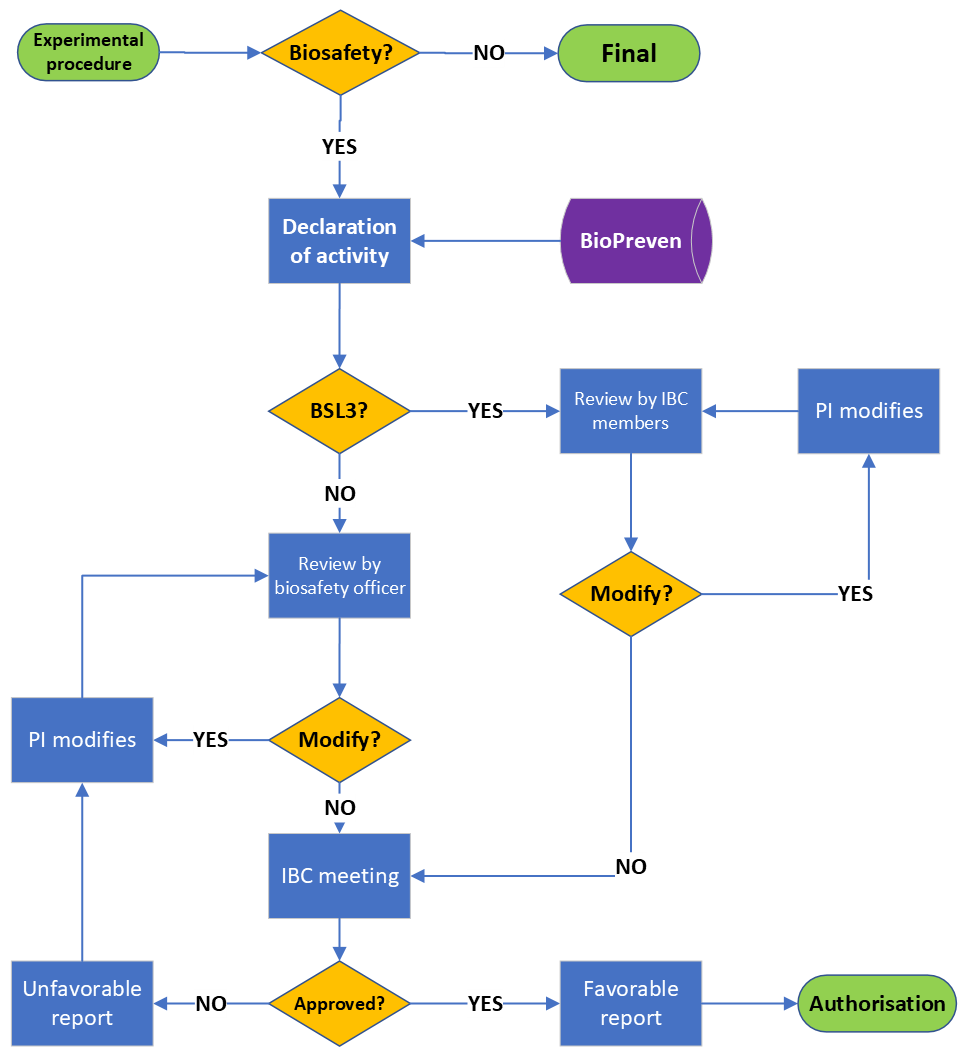Internal notifications
Procedure for requesting a risk assessment of activities involving biological agents

Whenever biological agents, whether or not genetically modified, are to be used that pose a risk to health (human, animal or plant) or the environment, both in research and in teaching practices, it is necessary to carry out a risk assessment and notify/request a review by the IBC. This must be done by IBC application. The procedure is the same for renewing previous requests.
Who can be a Principal Investigator (PI) on an IBC protocol?
The PI is a member of the academic staff or senior research who bears responsibility for the intellectual leadership of a project. The PI accepts overall responsibility for directing the research, the financial oversight of the award's funding, as well as compliance with relevant University policies and sponsor terms and conditions of the award.
Are an experimental procedure and a research project synonymous?
No, although they may match. A project may have one or several experimental procedures (work with animals, plants, microorganisms, cell lines, arthropods, samples, large scale, etc.) with different biosafety levels that require facilities and work practices clearly differentiated.
My research involves work with E.coli K-12, plasmids, and Saccharomyces spp. Is this research required to be registered with the IBC?
Yes. It is dependent upon the genetic material that is being manipulated as to whether or not the work just needs to be registered or if the work needs to go to the IBC for full approval. Submit an IBC Registration Form (BioPreven).
Can I just submit a research summary via e-mail to be reviewed and approved?
No. There is an electronic application form for IBC registration. Contact the Biosafety Officer (tel. 8049) for assistance with access to the web-based application (BioPreven).
When does an IBC protocol approval expire?
An approved protocol of BSL1 or BSL2 expire after 3 years from its initial approval date. If the protocol require a BSL3 the validity is for one year.